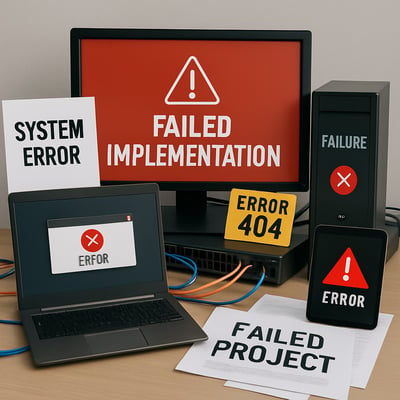Discover your MSP’s true strengths and blind spots, and see what it’ll take to scale with higher margins, on-time projects, and a team that works in sync.

Worried Your Team Won’t Use TopLeft? Signup for Guided Implementation
In 4 weeks, your technicians will run daily huddles from their Kanban boards, close tickets faster, and coordinate smoothly across teams without miscommunication.
We assess your team's readiness, deliver targeted training, and provide live coaching that gets actual adoption, not just head nods during training.
With hands-on change management and a follow-up Q&A, we ensure daily usage becomes a permanent habit.

Why Some MSPs Get Daily TopLeft Usage (And Others Watch It Fail)
Most MSPs see the risk where technicians fall back to old habits after TopLeft's implementation. Guided Implementation ensures your entire team adopts new workflows that stick.
Rather than treating TopLeft as just another tool setup, we focus on guiding your technicians to adoption through specific workflow changes and weekly coaching calls.
Through structured training and follow-up sessions, Guided Implementation builds lasting habits and mindset shifts that make using TopLeft second nature. This way your team's technicians stay on TopLeft every day, and get more work done with less stress.
Proven Methodology
Week 1-2: Foundation & Assessment: Current workflow analysis, team readiness evaluation, custom board configuration, and initial training sessions with department leads
Week 3-4: Active Coaching & Optimization: Daily huddle implementation, real-time workflow adjustments, individual team sessions, and performance tracking
Week 5-6: Sustainability & Advanced Features: Guided Workflow Practices (WIP limits, Resource Allocation), long-term methodology adoption strategy, continuous improvement process, and a success metrics reviews


Investment & ROI
Pricing:
Starting at $1,000 (scales with team size & complexity).
Includes:
Comprehensive assessment, 4+ hours of expert coaching, proven change-management playbook, and a 90-day follow-up.
ROI:
50% less manager coordination time, duplicate tools eliminated, and adoption that sticks and protects your software spend (no shelfware).
For Growing MSPs (10-25 techs)
Challenge: Technicians cherry-pick easy tickets while complex issues age and escalate
Impact: Daily huddles where everyone commits to specific work in front of the team
Result: Technicians working from Kanban every day, consistent follow-through on tickets, and managers who can coach instead of chase team members down
For Scaling MSPs (25-50 techs)
Challenge: Dispatch can't see who's actually available vs. who looks busy
Impact: Real capacity visibility across all teams on one screen, meaning that there is no more guessing on who has bandwidth
Result: Work flows to the right tech the first time, project deadlines get met, and overtime drops because you're not constantly reprioritizing work
For Established MSPs (50+ techs)
Challenge: With each team leader doing things differently, the company struggles to follow a single plan that leads to confusion.Impact: Every team runs the same daily huddle from the same Kanban system
Result: Work gets done consistently across pods, projects finish on schedule, and new techs ramp up faster because there’s one proven way to work.


For MSPs with Previous Failed Implementations
Challenge: Previous attempts at visual management failed because technicians didn’t use it.Impact: Change management that makes adoption mandatory, not optional
Next Steps
- Assessment Call - 30-minute evaluation of your team's implementation readiness
- Custom Proposal – Scope tailored to how your team is organized and works.
- Program Kickoff - Begin program kickoff with a dedicated success manager
- Timeline: Programs typically begin within 1-2 weeks of agreement
Ready to get your whole team on board and avoid another failed implementation?
This is essential for MSPs with 3+ employees managing complex workflows, organizations with previously failed implementations, teams using multiple project management tools simultaneously, and leadership seeking guaranteed adoption.







